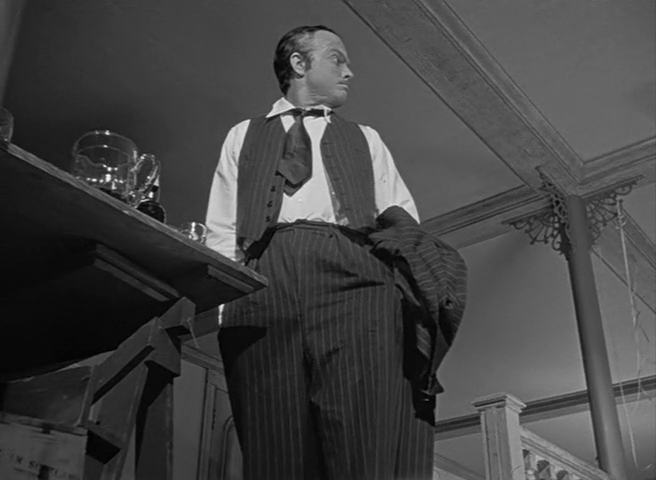Sep
2015
Citizen Kane – The Golden Age of Hollywood
Google “greatest movies ever made,” and I can guarantee that one film will show up on every single list. It is the undisputed champion of cinematic greatness that has stood the test of time and remained unsurpassed by modern films. Orson Welles’s masterpiece Citizen Kane was released in 1941 at the high point of the Golden Age of Hollywood. Citizen Kane set the bar high early on in the 40’s, and the producers of Hollywood rose to the challenge, subsequently turning out classics like Casablanca and It’s a Wonderful Life. However, no other film truly defined the 1940’s like Citizen Kane.
Citizen Kane begins with the death of the title character, Charles Foster Kane, who is an extremely wealthy newspaper mogul and one of the most influential men in America. He dies alone in the extravagant castle paradise that he has built as a monument to himself, uttering the word “Rosebud”: his last word. After a newsreel covering the news of the death of the tycoon, the story of Kane’s life unfolds as a series of flashbacks as young reporters try to solve the mystery of the man’s mysterious last word.
I have found that on some occasions, the onscreen drama is made so much more interesting when you know what went on behind the scenes: the bloopers, the quarrels between actors, and the real-life inspirations behind the film’s characters. So before you go off to watch Citizen Kane, I’m going to give you a little bit of behind-the scenes knowledge.
Although Orson Welles denie d it, Citizen Kane is very obviously based on the life of William Randolph Hearst, an American millionaire and newspaper tycoon who was know for his extravagant lifestyle, scandalous affairs, and political influence. Hearst was so infuriated with the movie, which he considered to be a mockery of himself and his wife, that he almost succeeded in shutting down production. He ordered all of his newspapers and publishing companies to boycott the picture and refuse advertising for RKO Studios. This damaged the film’s box office success but did not prevent its release. On the night of the film’s release, Welles found himself in an elevator with Hearst and invited him to come see the film. After Hearst declined, Kane replied, “Charles Foster Kane would have accepted,” before exiting the elevator.
d it, Citizen Kane is very obviously based on the life of William Randolph Hearst, an American millionaire and newspaper tycoon who was know for his extravagant lifestyle, scandalous affairs, and political influence. Hearst was so infuriated with the movie, which he considered to be a mockery of himself and his wife, that he almost succeeded in shutting down production. He ordered all of his newspapers and publishing companies to boycott the picture and refuse advertising for RKO Studios. This damaged the film’s box office success but did not prevent its release. On the night of the film’s release, Welles found himself in an elevator with Hearst and invited him to come see the film. After Hearst declined, Kane replied, “Charles Foster Kane would have accepted,” before exiting the elevator.
 So why did this controversial film have such an impact on the film industry? Because Orson Welles’s cinematography and lighting were completely unprecedented. He used camera angles and high contrast lighting to change the impressions of his characters. Char
So why did this controversial film have such an impact on the film industry? Because Orson Welles’s cinematography and lighting were completely unprecedented. He used camera angles and high contrast lighting to change the impressions of his characters. Char les Foster Kane is almost always shot from low camera angles and his face is often shielded in darkness,
les Foster Kane is almost always shot from low camera angles and his face is often shielded in darkness,
giving him a dominating and mysterious effect, while his wife is always shot from above with light on her face, making her seem weak and innocent.
At some points during filming, Orson Welles literally cut holes in the floor to get his low camera angles!


The dimly lit, high contrast lighting of the film paved the way for the dramatic lighting of future films noir like The Big Sleep, the non-chronological storyline pioneered the technique for modern directors like Quentin Tarantino, and the legacy of Charles Foster Kane lives on in the vaults of American history.
